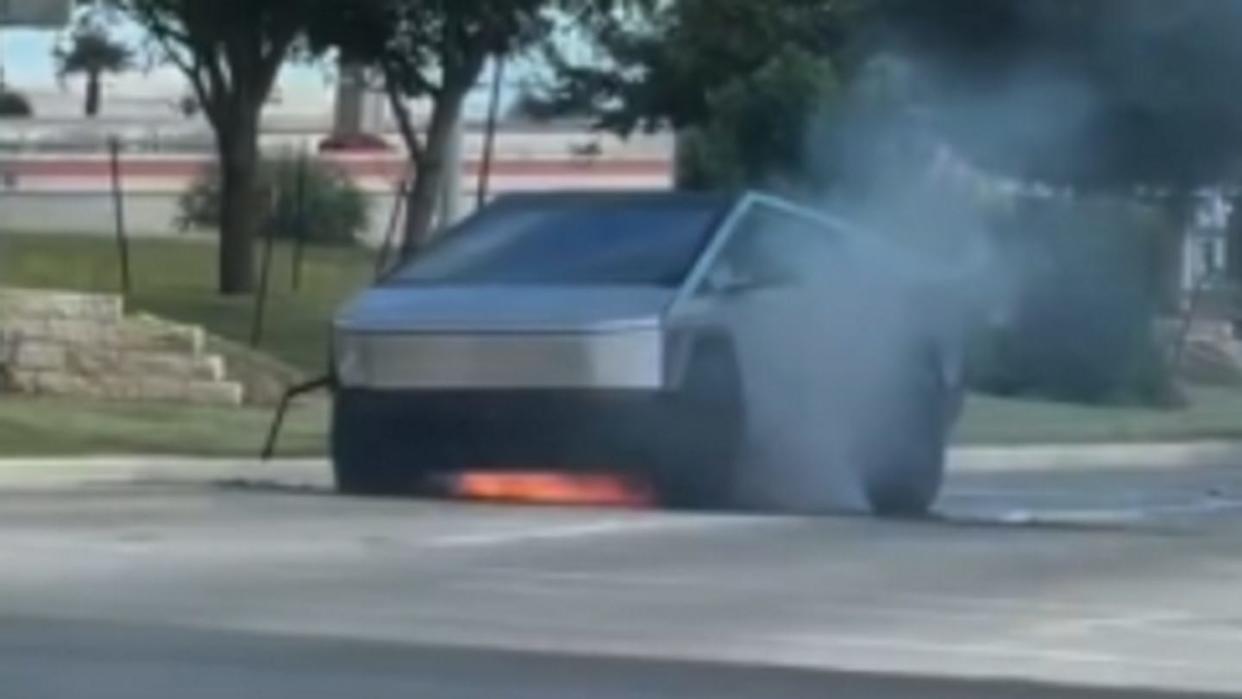Tesla Cybertruck Catches Fire After Hitting Hydrant, Burns for 90 Min

Cars and trucks catch on fire all the time due to accidents, crashes and malfunctions, but some vehicular infernos are more newsworthy than others. For example, when the vehicle in question is the opinion-splitting Tesla Cybertruck — and when the aforementioned fire happens after the truck hits a fire hydrant.
The fire happened in Harlingen, Texas on Tuesday, August 27th. According to local firefighters, it took over an hour to douse the damaged battery blaze. Local reports state that the accident involved the Cybertruck alone and no other vehicles, and the Tesla's occupants escaped unharmed. It's unclear how the driver happened to hit the fire hydrant, but the result was clear: the spray of water from the shattered fireplug damaged the Tesla's battery compartment, according to firefighters, causing a runaway thermal fire that defied quick and easy efforts to extinguish.
The lithium-ion batteries of electric vehicles are highly resistant to conventional firefighting methods — i.e. pouring some water on a blaze to cool and suffocate it — because the integrated components of a battery cell contain not just fuel in the form of the electrolyte, but also an integrated heat source and a source of oxygen. (These three factors are generally known as "the fire triangle.") As such, once a burn begins, it requires substantially greater efforts to starve it of heat or air.
“Electric cars such as Tesla, they are not like ordinary cars where we can go and just turn it off with water, it’s just gonna take an extensive amount of water,” Harlingen fire chief Rafael Balderas said to local news outlet Valley Central. Assistant fire chief Ruben Balboa confirmed that it required some 90 minutes to fully extinguish the fire.
Even after the blaze was knocked out, the fire department reportedly followed the truck as a tow truck took it away in case of a new flame-up. Electric vehicles that catch fire can spark up secondary blazes even days after the initial issue if the battery manages to heat itself back up to the ignition point, so careful monitoring of the wreckage is important.
You Might Also Like






